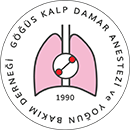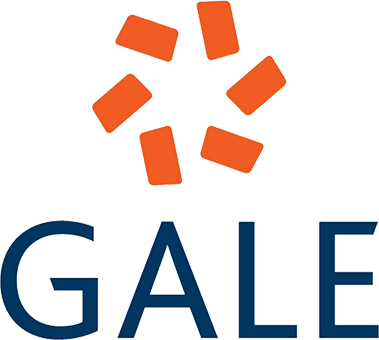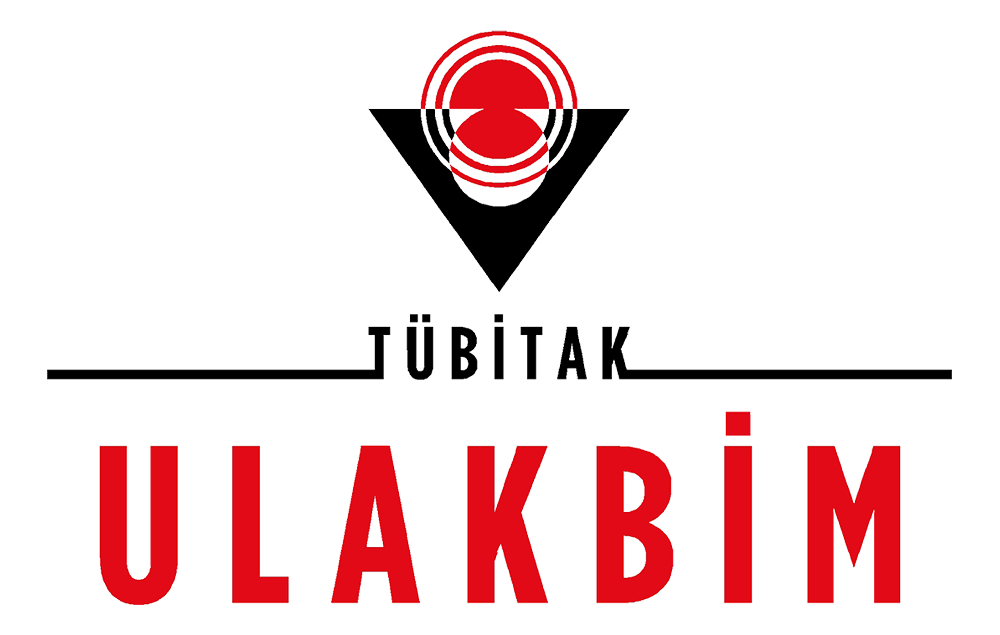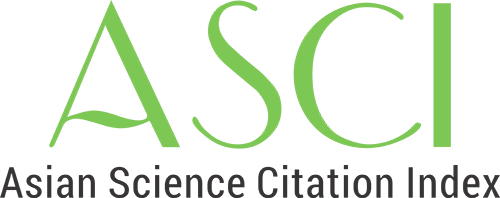

Volume: 19 Issue: 4 - 2013
| REVIEW | |
| 1. | Extravascular Lung Water and Sepsis Beliz Bilgili, Fethi Gül, İsmail Cinel doi: 10.5222/GKDAD.2013.153 Pages 153 - 160 (1382 accesses) The incidence of sepsis has been increasing because of the advancing age of the general population, a greater number of invasive procedures, and more immunosuppressive therapies. Nowadays, the mortality of sepsis is still high, and is still the major cause of morbidity and mortality for patients admitted to an intensive care unit. In sepsis, exaggerated responses might induce organ dysfunction including lung injury and shock, whether the focus is located in the lung or not. Extravascular lung water (EVLW) consists nearly of fluid in the pulmonary interstitial and alveolar spaces. EVLW can be measured at the bedside using the transpulmonary thermodilution technique and has a diagnostic value for the identification of patients. It is an indicator of prognosis and severity of sepsis-induced lung injury. Measurement of EVLW is useful in characterising the severity of respiratory disease, it is also beneficial in the management of patients with sepsis. Increased EVLW is associated with decreased life expectancy in patients with sepsis. Reduction of EVLW at an early stage and a negative fluid balance are associated with a more favorable outcomes. Key words as sepsis, septic shock, lung injury and extravascular lung water are searched in various databases and the prognostic, diagnostic and clinical significance of EVLW in sepsis and sepsis induced lung injury are discussed in this review. |
| RESEARCH ARTICLE | |
| 2. | Effects of Thiopental, Propofol, Etomidate, Midazolam on Hemodynamic in Anesthesia Induction and Intubation of Hypertensive Patients in the Coronary Artery Bypass Grafting Surgery Sema Şanal Baş, Mehmet Özcan Erdemli doi: 10.5222/GKDAD.2013.161 Pages 161 - 167 (1499 accesses) OBJECTIVE: The purpose of this study is comparing the hemodynamic effects of thiopental, propofol, etomidate, midazolam on induction, laryngoscopy, and endotracheal intubation of hypertensive patients in coronary artery bypass grafting (CABG) surgery. METHODS: A total of 80 patients with chronic hypertension, aged between 40 and 75 who are to undergo CABG surgery were included in a prospective, single-blind and randomized study. Group T received thiopental sodium (5-7 mg kg -1), Group E received etomidate (0.2 - 0.5 mg kg -1), Group P received propofol (1 - 2.5 mg kg -1), Group M received midazolam (0.1 - 0.4 mg kg -1) anestetic agents. The induction was completed by using fentanyl and rocuronium in all groups. Heart rate (HR), systolic arterial pressure (SAP),diastolic arterial pressure (DAP), mean arterial pressure (MAP) were recorded for the first 15 minutes. As also arterial blood gases (ABG) were sampled, end tidal carbon dioxide (ETCO2) values were recorded. RESULTS: SAP values decreased prior to laryngoscopy in Group T, E, and P. Only in Group E, increase in SAP during laryngoscopy and tracheal intubation was statistically significant. The decrease of MAP was significant in only Group T. Intubation 15 minutes, while the increase in MAP and HR in the Group P. CONCLUSION: Induction with anesthetic agents midazolam (Group M) was the group showing more hemodynamic stability of the response to laryngoscopy and endotracheal intubation in hypertensive patients who would undergo CABG surgery. |
| 3. | Comparative Efficiency of Plasma NGAL (Neutrophil Gelatinase-Associated Lipocalin) in Off-pump and On-pump Cardiac Surgery in the Early Dıagnosis of Acute Renal Injury Zafer Karadeniz, Zeliha Tuncel, Nihan Yapıcı, Türkan Kudsioğlu, Filiz İzgi Çoşkun, Hakan Nuraç, Ali Rıza Karaci, Sezer Karabulut, Fatma Ukil, Betül Öğütmen, Zuhal Aykaç doi: 10.5222/GKDAD.2013.168 Pages 168 - 174 (1631 accesses) OBJECTIVE: Development of acut kidney injury and acut renal failure after the cardiac surgery is caused increasing mortality and morbidity, prolonged hospital stay. The efficiency of plasma NGAL (neutrophil gelatinase-associated lipocalin) to comparing off-pump and on-pump cardiac surgery for early diagnosis of akut kidney injury named of study the aim is to predict the acut kidney injury after cardiac surgery. METHODS: Bloods were obtained from 40 patients undergoing CPB-requiring surgery (0n-pump) and without CPB (off-pump) surgery. Patients divided into group A(n=20) with on pump and group B (n=20) whitout CPB (offpump). Plasma neutrophil gelatinase-associated lipocalin (pNGAL) was determined at baseline and 3. (T0),12. (T1) and 24. (T2) hours after cardiac surgery. RESULTS: Plasma levels of T0 and T1 NGAL were higher in patients who goes onpump cardiac surgery compared who goes offpump cardiac surgery(T0 p: 0,023 ve T1 p: 0,040). There is no statistically significant difference plasma creatinine levels between two groups (p>0,05). CONCLUSION: In our study, on-pump and off-pump patients despite the acute changes in serum creatinine level and renal pNGAL damage in terms of morbidity and mortality in both the development of surgical method in difference, also both surgical method needs more studies that compares the surgical tecniques. |
| 4. | Preoperative, İntraoperative and Postoperative Predictors of Postoperative Respiratory System Complications in Patients Undergoing Open Heart Surgery Asuman Sargın, Fatma Zekiye Aşkar, Seden Nüshet Kocabaş doi: 10.5222/GKDAD.2013.175 Pages 175 - 183 (2124 accesses) OBJECTIVE: The increasing prevalence of risky cardiac operations and the changing patient profile,can cause to encounter more problems during intraoperative and postoperative periods.Problems related to the respiratory system in the postoperative period are most important reasons of increasing mortality and morbidity rates.The aim of study was to determine the preoperative, intraoperative, and postoperative predictors of the respiratory complications of open-heart surgery patients. METHODS: 1401 patients undergoing open-heart surgery between2000-2005, are evaluated retrospectively.Patients age, sex, body mass index, preoperative laboratory tests, left venricular ejection fraction(LVEF, %), comorbid diseases, use of β-blocker,smoking,type and duration of operation, duration of cardiopulmonary bypass and anesthesia, transfusion of blood intraoperatively, time of extubation, mediational drainage, length of stay in the ICU and in the hospital were recorded,.The relationship between these predictors and postoperative respiratory complications is investigated. RESULTS: In our study, the prevalence rate of postoperative respiratory complication among patients undergoing open-heart surgery was found to be39,2%.The most common complication was prolonged mechanical ventilation(36.1%), while the least frequent complication was pneumothorax(0.6%). The mortality rate due to respiratory complications was%3.3.As risk factors for respiratory complications included older age, female, smoking, hypertension, COPD, combined operations, preoperative hematologic and biochemical abnormalities, duration of CPB, anesthesia and operation time, extubation, ICU and length of hospital stay, intraoperative transfusion of blood products and mediastinal drainage. CONCLUSION: The detailed examination of the patients preoperatively and optimal treatment, could provide reducing complications of anesthesia and mortality rates, by allowing selection of the appropriate method of fast-tract respiratory system and shorter duration of surgery, anesthesia and CPB. |
| 5. | Invasive and Noninvasive Procedures Performed in the Cardiac Surgical Intensive Care and Postoperative Pain Ayla Yava, Aynur Koyuncu, Nusret Pusat, Vedat Yıldırım, Ufuk Demirkılıç doi: 10.5222/GKDAD.2013.184 Pages 184 - 190 (2794 accesses) OBJECTIVE: Aim: To determine the effect of invasive and noninvasive interventions implemented in intensive care unit to patients after cardiac surgery on the pain and hemodynamic parameters. METHODS: Material and Method: This study was a prospective, pre-post measured clinical trial. Invasive and noninvasive interventions were determined as coughing, breathing exercises, milking drains, mobilization, removing drain, and endoracheal aspiration. Numerical Rating Scale was used for determining of pain perceptions immediately before and after interventions. Blood pressure and heart rate (pulse) were also recorded prior to the procedure and immediately following the interventions. Pain treatment applications were recorded before one hour such implementations. Sixty two patients were included in the study. Wicoxon Signed Rank test was used for statistical analyses and p values of <0.05 were accepted as being statistically significant. RESULTS: Results: Mean age of the patients were 51.25±18.05 years, most of them were (87.1%) male, and 74.2% of the patients were undergone coronary by-pass grafting surgery. The patients all invasive and noninvasive pain scores were increased after interventions statistically significant (p<0.05). The highest pain scores were recorded in endotracheal suctioning before and after implementation (respectively 7.30±1.04 and 8.80±1.25). The patients systolic and diastolic blood pressure and pulse rate were increased after drain removal and endotracheal aspiration interventions as statistically significant (p<0.05). CONCLUSION: Conclusion: All patients pain scores and hemodynamic parameters were increased after invasive and noninvasive interventions. It was suggested that individual pain assessment and proper pain treatment needed before such implementations. |
| 6. | The Effect of Ketamine-Midazolam and Remifentanil-Midazolam on Sedation, Recovery and Hemodynamic in Pediatric Cardiac Catheterization Hakan Nuraç, Türkan Kudsioğlu, Fatma Ukil, Ahu Baysal, Sezer Karabulut, Reyhan Dedeoğlu, Nihan Yapıcı, Zuhal Aykaç doi: 10.5222/GKDAD.2013.191 Pages 191 - 198 (1160 accesses) OBJECTIVE: The purpose of this study was to compare the effects of ketamine-midazolam and remifentanil-midazolam combinations on hemodynamia, sedation and recovery levels in pediatric patients undergoing cardiac catheterization anesthesia. METHODS: One hundred ASA II-III pediatric patients between ages of 3 months and 10 years, scheduled for cardiac catheterization between June 2011 and August 2011 were randomly allocated into 2 equal (n=50) study groups assigned to receive sedation ketamine (1mgkg-1) (Group I) and remifentanil (0.1 mgkg-1min-1) infusion (Group II). Patients requiring mechanical ventilation and intravenous inotropic support were excluded from the study analysis. Before undergoing anesthesia, patients were transferred to the cardiac catheterization laboratory and patients electrocardiogram (ECG) and oxygensaturation (SpO2) levels were continuously measured. Before premedication, all patients were monitored and recorded for noninvasive blood pressure (NIBP), and sedation scores according to Modified Ramsey Sedation Scale (MRSS). Both groups initially received midazolam 0.05-0.1mgkg-1 for premedication. After catheterization was performed and completed, patients were stopped an anaesthetic medication and sent to recovery room where their hemodynamic data and recovery scores were recorded. RESULTS: Both groups demonstrated similar demographic characteristics. However, Patients received remifentanil-midazolam infusion reported significantly lower heart rate and mean of blood pressure values compared to patients received ketamine-midazolam. Hypotension with bradycardia were observed in these patients. There was no significant difference between the two groups in terms of MRS scores, duration of anesthesia ve process time. However, the recovery time of patients in Group I significantly higher than Group II. CONCLUSION: In this study, it is found that the infusion of remifentanil-midazolam combination in an adequate sedation which is considered to be an appropriate alternative to ketamine used routinely in pediatric cardiac catheterization can provide more comfortable and shorter period of recovery time. |
| CASE REPORT | |
| 7. | Anesthetic Management of a Patient with Atrial Mxyoma Undergoing Non-Cardiac Surgery Murat Çimencan, Hilal Peri Ayoğlu, Gamze Küçükosman, Özcan Pişkin, Bengü Aydın, Rahşan Dilek Okyay, Hatice Kübra Ergen, Mehmet Fatih Yüce doi: 10.5222/GKDAD.2013.199 Pages 199 - 202 (1344 accesses) Summary The Anesthetic Management of a Patient with Atrial Mxyoma Undergoing non-cardiac Surgery The main objective while planning the management of a safe anaesthesia for the patients who undergo to non-cardiac surgery with cardiac disease is to provide the most appropriate hemodynamic due to concomitant physiology of cardiac problem. Myxomas are the most common benign tumors of the heart and often are located at the left atrium. İn this case report we discussed the anaesthetic management of patient who underwent a non-cardiac surgery,with serious disease and left atrial myxoma Key words: Atrial myxoma; anaesthesia; non-cardiac surgery |
| 8. | Pregnancy and Cardiopulmonary Bypass with Pulsatile Flow Gamze Sarkılar, Cüneyt Narin, Elmas Kartal, Erdal Ege, Ali Sarıgül, Şeref Otelcioğlu doi: 10.5222/GKDAD.2013.203 Pages 203 - 205 (1370 accesses) Cardiopulmonary bypass during pregnancy is associated with a high maternal and fetal mortality. In this case; we present cardiopulmonary bypass experience of a 41-year-old female patient who developed complication with neurological sequelae due to mitral stenosis at 25 weeks of gestation. Pulsatile flow and optimal treatment strategies implemented for both mother and fetus throughout the operative period contributed to a successful outcome. |
| 9. | Anaesthetic Management In A Heart Transplantation Patient With Amiodarone Associated Thyrotoxicosis Cengiz Şahutoğlu, Zeynep Pestilci, Seden Kocabaş, Fatma Zekiye Aşkar, Aslı Hepkarşı, Çağatay Engin doi: 10.5222/GKDAD.2013.206 Pages 206 - 210 (2104 accesses) Introduction: The elective surgery of patients with abnormal thyroid function can be delayed until they are euthyroid with medical treatment. We present the anaesthetic management of a patient with amiodarone associated thyrotoxicosis undergoing heart transplantation. Case Report: A 20 year old female patient diagnosed as cardiomyopathy developed tamponade and cardiac arrest due to heart biopsy. The patient was resuscitated, cardiac tamponade was decompressed and amiodarone was started for ventriculer premature beats. The patients ejection fraction was 30% on echocardiography done two years later and thyroid function tests were FT3: 11,8 pg mL-1, FT4>12 ng dL-1 ve TSH: 0,001 µIU mL-1. The patient was started on propylthiouracil and metilprednisolone therapy with the diagnosis of thyrotoxicosis secondary to amiodarone. Ventricular tachycardia developed three months later and the patients ejection fraction was under 20% on echocardiography. Ventricular assist device implantation surgical procedure was planned for the patient. Plasmapheresis was performed 3 times and 28% reduction in FT4 levels was maintained. The patient underwent heart transplantation as a suitable donor heart was found. The patient was monitorized with ECG, pulse oximetry, invasive arterial pressure, central venous pressure, rectal temperature and transoesophageal echocardiography. Anaesthesia was induced with ketamine, midazolam, rocuronium, fentanyl and maintained with sevoflurane and propofol. The signs of thyrotoxicosis did not develop during the perioperative period. Conclusion: Amiodarone is at the top of the most widely used drugs in the treatment of arrhthymias. The surgical candidates who are using or have given up using this drug must be followed closely for perioperative complications. |
| 10. | Acute Ischemic Attack During Carotid Endarterectomy Under Cervical Plexus Blockade Ali Sait Kavaklı, Nilgün Kavrut Öztürk, Tuğra Gençpınar, Raif Umut Ayoğlu, Bilge Karslı, Mustafa Emmiler doi: 10.5222/GKDAD.2013.211 Pages 211 - 213 (1521 accesses) This case report is aimed to emphasize that cervical plexus blockade performed with success for carotid endarterectomy surgery leads to early recognization of neurologic complications which may occur during the operation and with timely intervention the rate of permanent sequelae can be minimized. |
| 11. | Pulmonary Hypertension Crisis in Pediatric Patient Undergoing Congenital Heart Surgery: Case Report Dilek Altun, Şule Turgut Balcı, Emre Özker, Bülent Sarıtaş, Canan Ayabakan, Rıza Türköz, Ayda Türköz doi: 10.5222/GKDAD.2013.214 Pages 214 - 217 (2757 accesses) Pulmonary arterial hypertension (PAH) with increased pulmonary vascular resistance (PVR), is a frequent complication of congenital heart diseases (CHD). PH, is characterised by the chronic elevation of pulmonary artery pressure and pulmonary vascular resistance leading to right ventricular enlargement and hypertrophy 1-2. Vasoconstriction of pulmonary vessels plays an important role in the early prognosis in children with congenital heart disease who has pulmonary hypertension. In this case report, we have reported a case who has undergone aortic interruption operation and successfully treated for the hypertensive crisis developing in the postoperative period. |
| 12. | An Anesthetic Management İn A Coronary Bypass Surgery Of A Patient With İdiopathic Trombocytopenic Purpura Esra Eker, Ceren Hazer Köksal, Ali Kemal Gür, Orhan Dirlik, Vural Polat, Özgür Gürsu doi: 10.5222/GKDAD.2013.218 Pages 218 - 220 (1359 accesses) We presented our anesthetic experience in a 62 years old female patient with idiopathic thrombocytopenic purpura (ITP) and had preoperative splenectomy have undergone off-pump coronary bypass surgery. |
| LETTER TO THE EDITOR | |
| 13. | Anaphylaxis and disseminated intravascular coagulation after exposure to radiocontrast agent in a patient undergoing percutaneous coronary intervention Bahar Aydınlı, Yeşim Güray, Ümit Güray, Rıza Sarper Ökten, Gürel Neşşar doi: 10.5222/GKDAD.2013.221 Pages 221 - 222 (1179 accesses) Abstract | |

















